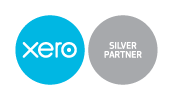How to solve cash flow problems
Where there’s a problem, there’s a solution. Cash flow problems are no exception.
We’ve compiled a list of quick and easy ways to solve your cash flow issues.
Get paid on time
A large proportion of cash flow issues can be solved by getting paid on time. Late payments are the reason that 1 in 5 businesses suffer from cash flow issues.
Chasing debtors and tracking invoices can be time-consuming but there are apps out there that can automate the process for you, saving you time and money.
- Shorten your payment terms
Research carried out by the Wow Company found that shortening payment terms meant an average decrease in the time it takes to get paid.
On average, reducing your payment terms to 7 days gets you paid within 17. Whilst, payment terms of 30 days get you paid in 35.
- Split your bills
For most small businesses, paying off a large lump sum at the end of the month can wreak havoc upon their financial systems.
By requiring your clients to pay you in increments – maybe half upfront, and half after the delivery of the service – you will help with their cash flow and encourage faster payment.
- Request deposits
Additionally, requiring a deposit can often go some way to improving your cash flow.
If you receive a deposit before providing your product or service you will always have some initial working capital to get the job done.
Manage which bills you pay
A better understanding of time-sensitive bills can allow you to make strategic decisions as to which bills you pay in which order. If you know that a certain bill needs to be paid before you get charged interest or late fees then it makes sense to pay it off early.
Equally, there’s less pressure to pay off a bill that isn’t time-dependent. Understanding which bills to pay and when can be a step towards solving your cash flow problems.
Apply for finance
The biggest mistake that small businesses can make is to apply for finance only when they need it. Though this seems logical, it’s actually more sensible to apply for finance before you need it.
Understanding what your loan options are and how much you need means that you can have money in place to cover a cash gap before it happens.
And applying for loans early can mean that you get the best rates, from the best provider.
How to predict cash flow problems
Knowing what to do to help prevent cash flow problems is one thing, but predicting them is quite another.

Because crystal balls aren’t all that available (or reliable) here are some other ways to keep an eye on the future of your finances:
Cloud accounting software
Cloud accounting is no longer the new kid on the block. In fact, recent research into small businesses by Xero found that between March of 2017 and March of 2018 there had been a 46.8% increase in the adoption of cloud accounting software.
Time-saving and cost-effective, cloud software keeps all of your books in one place. And having access to all of your most important documents anytime, anywhere, is invaluable to keeping on top of your finances. You can read more about the kickass benefits of the cloud here.
Create a budget
Creating a budget can help you to understand the pattern of your cash. This can be done in a spreadsheet, and is most typically done in software like Excel.
Committing numbers to paper, or a computer screen, means that you’re more likely to stick to them. And sticking to your budgets is essential to maintaining a healthy cash flow.
If done habitually, your budgeting will become more accurate. And accurate budgets mean that you can begin to strategise more effectively.
Create a cash flow forecast
In order to understand where cash flow problems arise you need a roadmap for your cash. A cash flow forecast can provide you with exactly that.
Unlike a P&L budget, a cash flow forecast does not show you profitability. Profitable businesses can still have cash flow issues.
Traditionally, cash flow forecasts were created in spreadsheets. But now there are cloud-based software solutions that can help to create your forecast and keep it up to date. This can save you time and energy that you can use to focus on your business.
On average, Float can save you eight hours a month in time that would be otherwise spent manually inputting data into spreadsheets. Float populates your forecast with bills and invoices pulled through from your accounting software. Filling up your cash budgets with actuals allows you to see the reality of your cash.
Insight into your current and future cash position can allow you to better plan for impending cash flow problems.

